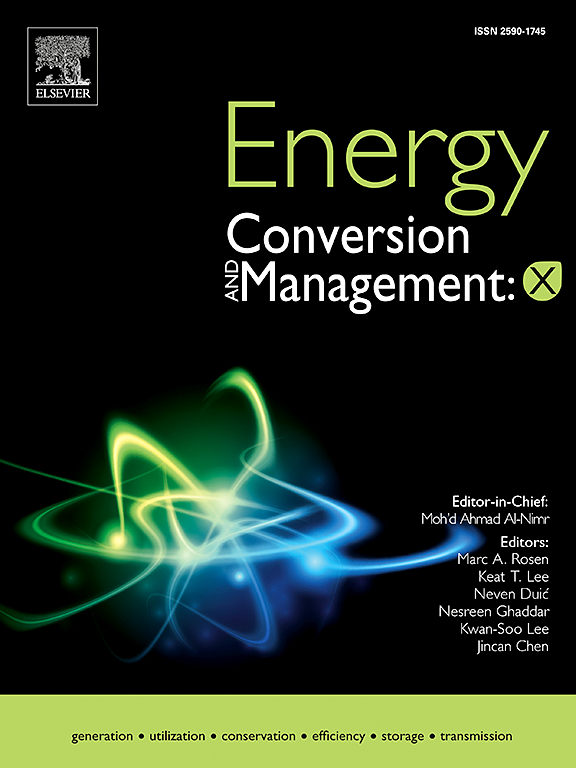Study on the comprehensive performance of a hybrid power system based on hydrogen-driven solid oxide fuel cells for green unmanned aerial vehicles
IF 9.9
1区 工程技术
Q1 ENERGY & FUELS
引用次数: 0
Abstract
To reach the Net Zero target, the aviation industry requires low-carbon development strategies. Hydrogen-driven solid oxide fuel cells (SOFCs) present a promising green power source, offering zero-carbon emissions and high energy efficiency. However, most current SOFC studies focus on maximizing efficiency in ground applications, which limits their applicability in aviation due to their low power-to-weight ratio. This paper explores a hybrid power system combining SOFCs and gas turbines for long-endurance unmanned aerial vehicles (UAVs). In this system, the SOFC enables highly efficient power generation while also supplying waste heat for recovery by the gas turbine, thereby improving both system efficiency and the power-to-weight ratio. Four configurations of the hybrid power system are compared during both the takeoff and cruise phases. The optimal setup is further analyzed to assess the effects of operational parameters, such as SOFC fuel utilization and compressor pressure ratio. Simulation results indicate that the SOFC-based hybrid power system achieves a system efficiency of 42.25 % during the takeoff phase and 52.01 % during the cruise phase, significantly higher than conventional micro gas turbine power systems. The power-to-weight ratio is 0.7747 kW∙kg−1, a substantial improvement over conventional SOFC-based UAV power systems (approximately 0.3 kW∙kg−1). Compared to traditional UAV power systems, the hybrid system—utilizing natural gas steam reforming and carbon capture and storage technology for hydrogen generation—can reduce carbon dioxide emissions by 72.47 %.
求助全文
约1分钟内获得全文
求助全文
来源期刊

Energy Conversion and Management
工程技术-力学
CiteScore
19.00
自引率
11.50%
发文量
1304
审稿时长
17 days
期刊介绍:
The journal Energy Conversion and Management provides a forum for publishing original contributions and comprehensive technical review articles of interdisciplinary and original research on all important energy topics.
The topics considered include energy generation, utilization, conversion, storage, transmission, conservation, management and sustainability. These topics typically involve various types of energy such as mechanical, thermal, nuclear, chemical, electromagnetic, magnetic and electric. These energy types cover all known energy resources, including renewable resources (e.g., solar, bio, hydro, wind, geothermal and ocean energy), fossil fuels and nuclear resources.
 求助内容:
求助内容: 应助结果提醒方式:
应助结果提醒方式:


